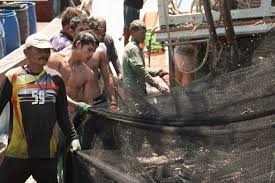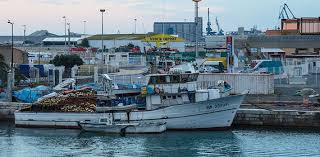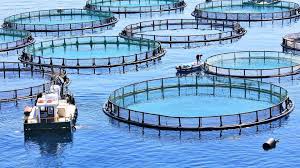Fisheries enhancement involves activities aimed at supplementing or sustaining the recruitment of one or more aquatic organisms and raising the total production of selected elements of a fishery beyond a level that is sustainable by natural processes.
This article highlights five forms of fisheries enhancement. Traditional fisheries enhancement involves two main systems, namely habitat modification and retention systems. There are, however, constraints that sometimes lead to failures in fisheries enhancement schemes.
Definition of Fisheries Enhancement
Fisheries enhancement refers to production systems that go beyond extractive, unmanaged open-access fisheries or managed capture fisheries. The Food and Agriculture Organization of the United Nations defines ‘enhanced fisheries’ as “activities aimed at supplementing or sustaining the recruitment of one or more aquatic organisms and raising the total production or the production of selected elements of a fishery beyond a level which is sustainable by natural processes.”
Read Also: 7 Medicinal Health Benefits of Daffodils (Narcissus Plant)
Forms of Fisheries Enhancement

Forms of fisheries enhancement include (Welcomme and Bartley, 1998):
- Introduction of new species to exploit underutilised parts of the food chain or habitat.
- Stocking of water bodies to improve recruitment.
- Fertilisation of the water to increase productivity.
- Engineering the environment to improve fish reproduction, migration, and provide shelter and food resources.
- Elimination of predators and other unwanted species.
Traditional Fisheries Enhancement
Traditional fisheries enhancement systems or measures have the following characteristics in common:
- A degree of management and intervention beyond traditional capture fisheries.
- Property rights that are more narrowly defined than in capture fisheries.
Areas of intervention in traditional fisheries enhancement include the movement of fish stocks, the extent of water retention, water quality (fertility), and the availability of fish feed. Enhancement techniques may also be associated with or combined with methods like the attraction or confinement of fish.
These systems depend on the same resources as capture fisheries and involve smaller water bodies that can be guarded and harvested more easily than larger rivers and lakes. Unlike in capture fisheries, exclusive use rights over the enhanced fisheries resources and facilities are usually required.
Traditional fisheries enhancement systems are often in competition with other forms of resource use, such as capture fisheries. These systems are typically based on local knowledge and are subject to traditional rules and regulations applicable to resource utilisation.
Traditional Fisheries Enhancement Systems

The traditional fisheries enhancement systems may be based on:
- Habitat modification or fish shelter systems: These involve introducing structures that attract fish, such as fish aggregating devices (FADs) in capture fisheries, which provide periodic shelter that improves stock recruitment, survival rates of juvenile fish, and/or natural food supply.
These are referred to as shelter fisheries systems. Many fish species associate themselves with floating or drifting objects that provide shelter and protection against predators. Fish aggregating systems exploit this behaviour to attract fish and increase catches.
These systems also improve fish habitats or provide additional feed, thereby enhancing the resource. An example of this system is the brush park. Brush parks are submerged structures made of wooden materials, such as brushes and branches, usually fixed to the bottom of a shallow water body.
They are located in brackish water lagoons but are also found in freshwater lakes and rivers. They cover water areas ranging from a few square meters to several hectares and are labour-intensive to construct and operate. Brush parks:
a. Offer some fish species a protected environment for breeding, spawning, and feeding.
b. Provide additional fish food in the form of aquatic organisms attached to underwater substrates and associated fauna colonising the structures.
c. Attract fish.
- Retention systems: This is the traditional enhancement technique most similar to aquaculture. It involves retaining water using physical structures, such as weirs, flood depressions, or ponds; managing the water; and exercising some control over fish stocks. Fish can either be stocked or naturally present in the retained water, and their production is supported by feeding or fertilisation.
Permanent or Semi-Permanent Barriers
Barriers made of reeds, grass, mud, or more solid materials are placed across small channels or used to raise natural embankments to control water inflow and outflow and retain fish.
Traps, baskets, or nets are used for fishing while the water remains in place, or fish are caught by breaching the dam, releasing the water through nets or traps, and collecting the remaining fish as the bottom becomes dry.
Fences and Traps
A combination of fences and traps built from bamboo or palm fronds can be used to exploit fish migration patterns. When they do not involve additional management measures, these are closer to fish-catching devices than enhancement systems.
Drain-in Ponds
In floodplains and other seasonally inundated areas, naturally occurring depressions are deepened or ponds are dug to prolong the retention of water and lengthen the fish-harvesting season. These are known as drain-in ponds or fish holes. Fish enter these ponds during floods and are trapped as the waters recede.
Drain-in ponds exploit the annual cycle of flooding and drying. During the wet season, rivers overflow their banks and floodwaters spread across plains, acquiring nutrients from terrestrial sources. Fish can move freely in flooded areas, benefiting from increased primary productivity and a seasonal increase in fish biomass.
During the dry season, drain-in ponds become congested with vegetation and may become anoxic due to high water temperatures. Management of these ponds includes feeding the retained fish with agricultural wastes and by-products or fertilising the pond water. Retention ponds can also be stocked with juvenile fish sourced from open waters.
Constraints of Traditional Fisheries Enhancements
Constraints on fish sheltering and retention systems include:
- High financial and labour investments for constructing and maintaining large fish sheltering systems, such as brush parks.
- Market constraints due to bulk harvesting from larger sheltering systems, which leads to low market prices and returns on investment.
- Environmental problems arising from large-scale construction and deforestation, which may require wood purchases from distant locations, causing conflicts with local communities.
- Resource use conflicts, as fish retention systems require established user rights over an extended period. These conflicts arise where suitable water retention sites are limited, and other users are excluded from the benefits of fish retention and resource use.
- Poor water management in traditional retention systems, which reduces fish production in confined water bodies due to low oxygen levels, high waste concentrations, and low water exchange.
Read Also: Bacterial Canker (Stone fruit trees): Description, Damages Caused, Control and Preventive Measures
Reasons for Failures of Fisheries Enhancement Projects in Africa

Failures of fisheries enhancement projects in Africa may result from:
- Low returns on investment, leading to a loss of interest in fish farming and enhancement schemes.
- The labour-intensive nature of fish farming, which may divert attention from other farming activities.
- Many aquaculture projects are not planned in collaboration with target groups and experts.
- Production inputs such as agricultural land and water have opportunity costs.
- Constraints related to the availability and regular supply of fingerlings for long-term sustainability of fish farming.
- Feed and fertilisers for fish farming have alternative uses.
- The specific skills and knowledge required for aquaculture are not part of traditional African knowledge systems.
- Comprehensive interventions in the rearing process of aquatic organisms and their environment have no tradition in Africa.
- Traditional African institutions do not provide a conducive context for modern fisheries enhancement and aquaculture, as:
a. Modern fisheries enhancement and aquaculture require large investments, which are only viable if benefits are realised by those bearing the costs.
b. Traditional land and water use rights are not always secure enough to justify investments in facilities.
c. Culture-based fisheries in open waters are feasible only when exclusive use rights are granted to investors, which often conflicts with traditional use and access rights.
Traditional fisheries enhancements explore methods of increasing fish yield, such as the use of brush parks and retention systems, where fish may be fed or the water fertilised. However, large investments may be required, and these systems may still allow open access, reducing the potential returns.
Do you have any questions, suggestions, or contributions? If so, please feel free to use the comment box below to share your thoughts. We also encourage you to kindly share this information with others who might benefit from it. Since we can’t reach everyone at once, we truly appreciate your help in spreading the word. Thank you so much for your support and for sharing!
Read Also: Relationship Marketing Process and Approaches to the Study of Marketing

